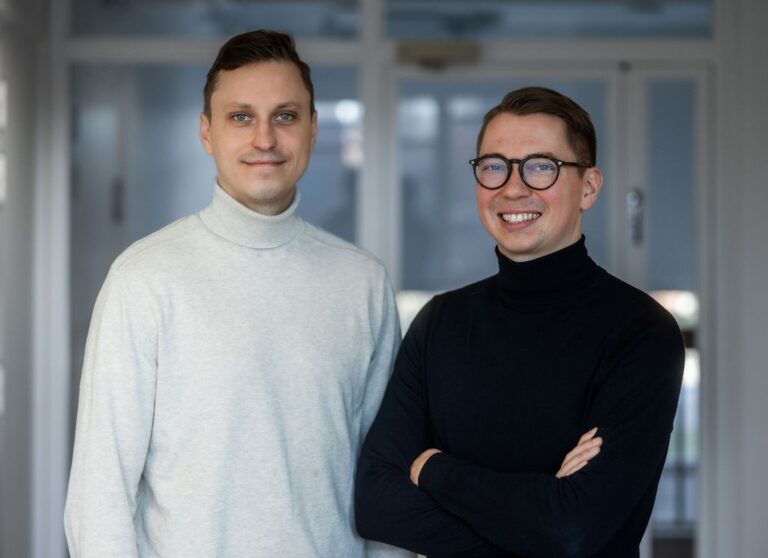Gosta Labs: Enhancing healthcare client encounter efficiency

The LUMI supercomputer, one of Europe’s top-tier supercomputers, provides the compute backbone for the LUMI AI Factory, enabling cutting-edge RDI at the intersection of AI and HPC. This success story demonstrates how the LUMI supercomputer has already been used to develop AI solutions, and serves as inspiration for further innovation with LUMI AI Factory.
Gosta Labs is a Finnish health technology company developing machine learning models to improve patient care and medical practice. The company’s flagship product is Gosta Aide, an artificial intelligence assistant with language models tailored to the needs of the social and healthcare sector, automating the creation of client and patient records. Gosta Aide frees up the healthcare staff’s time for client encounters, thus supporting the delivery of human-centered, high-quality care. Gosta Labs has used the LUMI supercomputer to develop task-specific language templates.
For health and social care professionals, up to half of their daily working time can be spent on administrative tasks such as creating client and patient records. At the same time, there can be differences in the recording practices of professionals in different organizations. The aim was to harmonize these recording practices. To solve this problem, Gosta Labs started developing an AI assistant that could help with administrative tasks in healthcare. First, they set out to solve the problem of generating client and patient records in European languages. Around the world, several so-called “ambient clinical documentation” solutions are already in use, notably in the US. Many of these solutions use closed, large language templates developed in the US and available in Europe.

LUMI supercomputer as a training platform for machine learning models
Training task-specific machine learning models requires substantial computing power. The LUMI supercomputer was chosen as the best platform for Gosta Labs to train its models. The AI team in Otaniemi, Espoo, also has extensive experience in leveraging CSC’s computing environments from their university and doctoral research work. Gosta Labs was already familiar with the SLURM batch job environment used by LUMI, having worked with it on previous supercomputers during their dissertation research on training language models.
According to Gosta Labs’ AI Scientist Jarkko Lagus, the deployment process went relatively smoothly and straightforwardly. For their model training runs, Gosta Labs utilized LUMI video training materials as well as tools and tutorials—originally developed by TurkuNLP and SILO.AI for training their Poro and Viking language models—on how to use PyTorch on large computing clusters with AMD GPUs. Thanks to these resources, conducting comparable model training in the LUMI environment was successful.
Funding for computing, growth and internationalisation
Gosta Labs has an ongoing industrial research project supported by Business Finland, which helped them to launch their LUMI work in the spring of 2024, and in the autumn they raised €1.2 million in pre-seed funding to accelerate the company’s wider development and internationalisation.
– For computationally intensive R&D projects of SMEs aiming to produce competitive products for international markets, we offer special computational support for LUMI computing services up to 100,000€, but usually fewer resources are sufficient for customers. Large and midcap companies, on the other hand, can get normal R&D funding for these costs, says Outi Keski-Äijö, Ecosystem Manager, Business Finland.
– Our project got off to a fast start, exceeding our expectations in many ways. During the project, we created several task-specific models that allow us to replace large, closed models. We improved our models’ performance and resource efficiency while offering an environment-independent alternative to closed large language models from a data protection perspective,summarizes Viertolahti.
– Additionally, we achieved the scalability needed to produce the necessary European data sets for training and to train our models for multiple European languages, he concludes.
Customers enthusiastic
The feedback from customers has been extremely positive.
– Our customers have been genuinely excited about our strong European expertise and our ability to develop machine learning models for healthcare so that not all solutions need to rely on global providers, says Sippola.
– In addition, our development efforts have been praised by data protection teams in healthcare organizations, adds Viertolahti.
Finnishness and Europeanism built into DNA
– Being part of the Finnish and EU AI ecosystem is built into our DNA. It’s really great to be able to develop our models with LUMI. Promoting European technological and AI expertise is also a very important mission for us at Gosta Labs – also taking into account the current global situation, emphasizes Sippola.
– The implementation of certain tasks using large language models consumes a significant amount of computing power and resources in relation to the benefit of the task. The models we develop will be able to run in much lighter environments and will be more energy efficient, for example, explains Viertolahti.
European AI development and its importance is a recurring theme in the societal debate. Therefore, investing in Finnish AI and language model development is of great societal importance – not only for Finnish and European language capabilities but also for European technological competence and self-sufficiency. This value is underlined when it comes to social and health tools.
Models in use in Finland – next for Europe
Gosta Labs,’ ambitions are high. It wants to be Europe’s leading AI developer in healthcare. The first models have already been developed and deployed in healthcare in Finland and Switzerland.
– The next step for Gosta Labs is to extend its support to more European languages. We want to continue to develop new models and further develop our models on LUMI. We will also improve our capabilities in the automated measurement of impact data, says Lauri Sippola.
Author: Tiina Leiponen, CSC
Image on top: Adobe Stock

